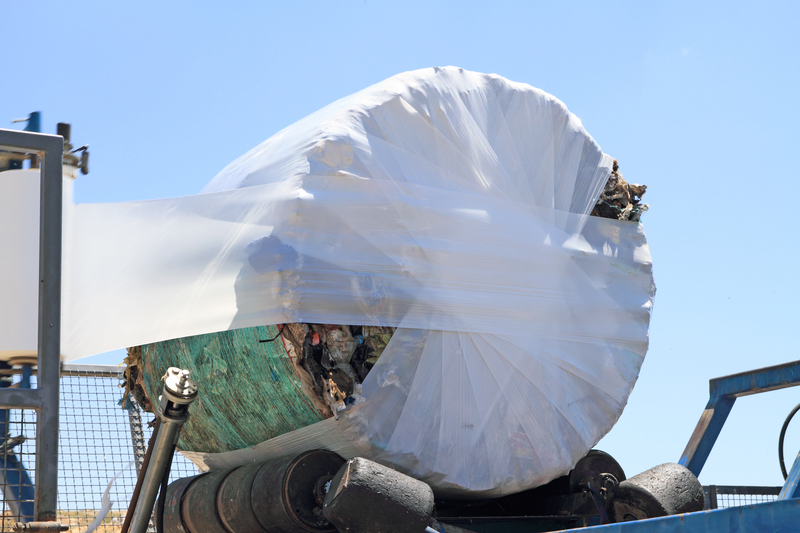The Role of Builders Skips in Construction Efficiency
Construction sites are hubs of activity, encompassing a wide array of tasks and machinery that produce substantial amounts of waste daily. Effective waste management is therefore paramount to achieve optimal efficiency. One key tool in this process is the builders skip. In this article, we delve deep into the crucial role that builders skips play in enhancing construction efficiency, discussing their multiple uses, benefits, and best practices for employing skips on projects of all sizes.

What Are Builders Skips?
A builders skip, sometimes referred to as a construction skip or skip bin, is a large open-topped waste container designed for loading onto specialised lorries. These skips are commonly used on building and renovation sites to handle considerable volumes of waste generated during construction projects. Available in a variety of sizes, ranging from mini skips (2-3 yards) to large roll-on roll-off skips (20-40 yards), they offer a versatile solution for waste containment and removal.
Typical Materials Disposed Of In Builder's Skips
- Concrete rubble and bricks
- Wooden planks, beams, and paneling
- Drywall, plasterboard, and insulation
- Metal scraps and wiring
- Packaging materials
- Old fixtures and fittings
Choosing the right type and size of skip is critical for maximising efficiency and minimising costs on building sites.
Why Are Builders Skips Essential for Construction Efficiency?
In the ever-evolving construction industry, time and cost management are decisive factors. Integrating skips into site management brings forth a multitude of advantages, directly contributing to smoother workflows and more cost-effective projects. Here's how utilizing builder's skips enhances construction efficiency:
1. Streamlined Waste Management
Speed and simplicity in managing site waste is among the foremost benefits of builder skip hire. By providing a single, central location for rubbish, skips significantly reduce the time tradespeople spend moving and sorting debris. Immediate disposal prevents the accumulation of waste, helping to keep the worksite cleaner and less hazardous.
- Labour Savings: Workers can focus on core tasks rather than waste logistics.
- Site Safety: Fewer obstructions mean lower risk of accidents, slips, or falling hazards.
2. Improved Compliance with Environmental Regulations
The construction sector is governed by increasingly strict regulations regarding waste disposal and recycling. Using appropriately licensed skips helps ensure construction firms remain legally compliant, avoiding substantial fines and supporting environmental objectives by enabling proper segregation and recycling of materials.
- Skips can be designated for different material types (e.g., general waste, hardcore, metals), simplifying recycling efforts.
- Reputable skip hire companies offer documentation for proper disposal, aiding regulatory compliance.
3. Enhanced Productivity and Workflow
Disorderly construction sites slow productivity and increase the likelihood of delays. By integrating builders skips strategically around the site, workers have quick and easy access to disposal points. This minimises unnecessary trips and interruptions, ensuring work flows seamlessly from demolition to final fix.
- Multiple skips can be placed at key locations to match different work phases.
- Faster waste clearance means quicker progress and fewer project overruns.
4. Cost-Effectiveness
When waste is properly managed, overall project costs are lower. The rental of large builder's skips is often more economical than frequent trips to landfill or relying on smaller waste disposal units. Consolidating site waste allows for bulk removal, potentially reducing the number of collections required.
- Skip hire companies often recycle a large percentage of collected waste, lowering disposal costs.
- Efficient waste management can result in savings on labour, equipment, and landfill fees.
Types of Builders Skips: Sizes and Uses
The efficiency that skips bring to construction projects depends in part on selecting the right type and size. Here's an overview of the different kinds of skips available and their typical uses in the building trade:
Mini Skips (2-3 Yards)
- Ideal for small renovation or extension projects
- Suitable for disposing of minor landscaping waste or light demolition debris
Midi Skips (4-5 Yards)
- Often used for bathroom/kitchen refits
- Fits most domestic driveways; perfect for medium-scale clearances
Builders Skips (6-8 Yards)
- Most common choice for standard construction sites
- Large enough for substantial waste, yet flexible for most sites
Large Skips (10-16 Yards)
- Perfect for big building projects involving bulky, lighter waste (e.g., packaging, plasterboard)
- Often used in refurbishment and shopfitting contracts
Roll-on Roll-off Skips (20-40 Yards)
- Suited for very large commercial construction sites
- Can handle huge volumes of inert, recyclable, or mixed construction waste
Tip: Overfilling a skip can lead to additional charges and safety issues. It is both safer and more cost-effective to hire the right size skip based on the estimated volume of waste.
Key Benefits of Using Builders Skips in Construction Projects
Many construction professionals consider builders skips not just as waste bins, but as essential assets that:
- Minimise site downtime through swift waste removal
- Boost morale by maintaining clean, orderly workspaces
- Support sustainability by facilitating sorting and recycling
- Reduce environmental impact thanks to cost-effective transportation and disposal
- Provide flexible solutions for sites with varying waste streams and generation rates
Builders Skips: A Cornerstone of Modern Construction Sites
From residential developments to major infrastructure builds, no modern construction site is complete without builders skips. Their adoption ensures that both small-scale refurbishments and massive new builds maintain momentum and adhere to high standards of efficiency and safety.
Best Practices for Maximizing Skip Efficiency on Construction Sites
To extract the maximum value from builders skip hire and make a real difference to construction efficiency, follow these industry-leading practices:
1. Plan Waste Disposal Early
Incorporate waste management planning into project schedules before work begins. Estimate the types and amounts of waste expected, and book the correct size skip or set of skips for each phase of the build.
2. Position Skips Strategically
- Place skips close to high-waste areas or outside key access points to reduce unnecessary movement of rubbish.
- Ensure skip lorries can safely access and empty/replace skips without disrupting site work.
3. Educate On-Site Teams
Train site operatives to segregate waste, identify hazardous items that should not be put in general builders skips, and make efficient use of space within the skips.
4. Monitor and Adjust
Regularly review how skips are being used. If a certain type of waste is building up faster than anticipated, request an additional skip or a larger size at the next hire cycle.
5. Follow Legal and Safety Guidelines
- Avoid overfilling skips. Never load waste above the fill line.
- Do not dispose of restricted materials such as asbestos, fridges, tyres, or hazardous chemicals in general builders skips.
- Work with fully licensed skip hire companies to ensure ethical and legal disposal of all materials.

Environmental Impact and Sustainability of Builders Skips
With rising public and governmental demand for sustainable construction, using builders skips responsibly helps projects align with green building standards. Here's how builder's skips support environmental goals:
- Facilitating segregation and recycling: Skips can be dedicated for specific waste streams (e.g., metal, timber, aggregates).
- Reducing landfill dependency: Modern skip hire firms recycle a large portion of waste, minimising the volume sent to landfill.
- Supporting reuse and donations: Quality surplus materials can be separated and diverted for reuse or community projects.
The Future of Builders Skips: Innovation and Efficiency
The skip hire and waste management industry is embracing new technologies to further enhance efficiency on construction sites. Advances such as GPS-tracked collections, online booking systems, and smarter routing are ensuring skips are delivered, collected, and replaced precisely when needed. The next generation of skips may even incorporate digital monitoring to alert site managers when a swap or collection is required, preventing site slowdowns due to full bins.
Conclusion: Builders Skips--A Vital Component in Construction Efficiency
In summary, the ongoing efficiency of any construction project depends heavily on effective waste management, and builders skips provide the simplest and most effective waste solution. Every aspect--from initial planning and compliance to cleanliness, safety, and environmental responsibility--is enhanced by the use of skips. Companies that prioritise strategic skip hire enjoy smoother operations, fewer costly delays, and improved sustainability credentials.
Whether you are managing a small home refurbishment or overseeing a major commercial development, integrating builders skips into your workflow is a proven step towards achieving and maintaining construction efficiency. In an era where every minute and resource counts, builders skips are not just convenient--they are indispensable.
Key Takeaways
- Builders skips are essential for organized, efficient construction waste management.
- Using various skips for different waste streams supports compliance and sustainability.
- Planning and strategic use of skips significantly boost productivity and cost-effectiveness.
- Builders skips are continually evolving, with new technologies improving site efficiency further.
If you are planning a construction project, make sure builders skips are at the top of your supply list, and watch as your project runs smoother, safer, and greener than ever before.